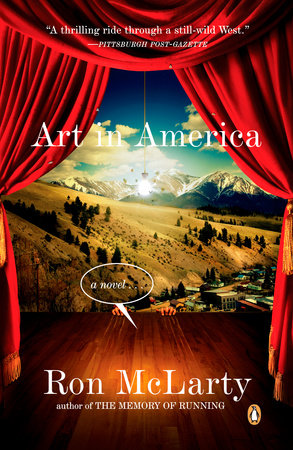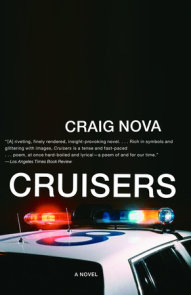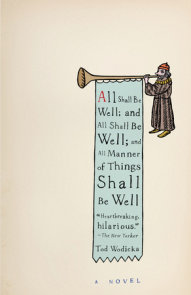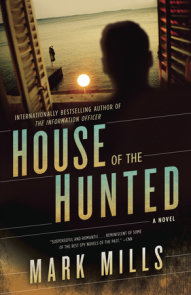READERS GUIDE
Questions and Topics for Discussion
INTRODUCTION
Middle-aged New York writer Steven Kearney is down on his luck. A prolific but unpublished author, Steven works construction jobs to make ends meet while he adds to his stack of novels, plays, and poems that have gone unnoticed by the literary establishment. Things get worse when his girlfriend, Beverly, dumps him, steals his money, and has him evicted. Broke and depressed, Steven moves in with his best friend, Roarke, a lesbian director, while he contemplates his next move. Then he gets a letter from a distant fan, Miss Wilma Kirk, arts patron and historian of Creedemore, Colorado, inviting him to serve as artist-in-residence and asking him to write a play reenacting the town’s long and colorful history, to be performed at the end of his three-month stay. With no other options in sight and nothing left to lose, Steven accepts the offer and embarks on a new adventure.
Once he has adjusted to the altitude, Steven settles into small-town life in Creedemore, finding inspiration for his play in interviews with town residents. He even discovers a new love interest in plucky local artist and breast cancer survivor Molly Dowie. But just as he starts to develop some self-confidence and a sense of purpose, chaos erupts in Creedemore. A shootout between an elderly landowner and a young rafting tour guide over trespassing and water rights attracts the attention of a fringe anti-property group called the Liberty Society. The resulting controversy catapults the town into national headlines, divides its residents, endangers Steven’s play, and threatens to destroy the very foundation of Creedemore.
McLarty, an accomplished actor, playwright, and author of the New York Times bestseller The Memory of Running, is a keen observer of social interaction with a special talent for rendering keenly observed characters. His cast here includes the local cowboy bard, a sheriff who talks to his dead partner, a pipe-smoking humanist minister, and a chorus of ranchers, academics, and radicals—each more memorable than the last. Layered within the novel’s multi-strand plot and pitch-perfect dialogue is McLarty’s send-up of pressing contemporary issues like environmental activism, religion, the meaning of art, and what constitutes a good cup of coffee. Briskly paced and deftly drawn, Art in America is a highly entertaining novel, equally tenderhearted and hilarious.
ABOUT RON MCLARTY
Ron McLarty is the author of the New York Times bestseller The Memory of Running (soon to be a film starring Andre Braugher) and the critically acclaimed mystery novel Traveler. He is also a playwright, audio book narrator, and seasoned actor who has appeared on more than one hundred television programs, including The Practice, Law & Order, and Sex and the City, as well as in many films and theatrical productions. He lives in New York City with his wife, actress Kate Skinner.
A CONVERSATION WITH RON MCLARTY
Q, Steven Kearney is the prototypical frustrated artist, yet you’re a bestselling author. Are there parallels with your own story and can you relate to his struggles?
It took years for me to understand that the one person you must satisfy when it comes to your attempts at creativity is yourself. I had written ten unpublished novels over a thirty-year period. For the first twenty years I went looking to others for praise rather than making the work its own reward. Steven arrived at this truth about the same time I did.
Q. Why did you choose to set your novel in the fictional town of Creedemore as opposed to an existing Colorado town? How do you go about creating a fictional place?
My children worked summers as cowboys on a ranch just outside a small Colorado town, from the time they were twelve through college. A lot of strangely wonderful characters inhabited that town and visited that ranch. Whenever I was with my kids up there and spent time with those folks, I always had the lovely feeling that people are just better than we sometimes think they are. For a writer trying to create a certain mood, I felt I was very lucky to be guided through place and time by those people.
Q. No matter how much of a loser he fancies himself, Steven has Roarke’s loyal support. Do you think artists need at least one champion in order to stay committed to their work?
We all need someone who’s not just passing through. Someone who knows when to be honest and when to hold their own counsel. For Steven, Roarke is representative of certain people who understand that art isn’t about winning or losing. Often it’s simply about endurance. I’m not sure if artists need a champion as much as someone who views their poems or their paintings or their performances in the tiniest off-Broadway theater with love and understanding.
Q. You walk a fine line in this novel between parody and realism, lampooning milieus like the New York theater scene or the Liberty Society meetings without sacrificing your readers’ sympathies for the characters within them. Is it a challenge for you to find this balance?
A writer shouldn’t be an assassin. The characters that drive your story deserve at least understanding. Once you give them that and trust them to tell your story, how can you not love them?
Q. You have created many memorable characters in this novel. What inspired these characters and how did you determine the number you would need to tell the story?
After many years of trial and error, of searching for a path as a storyteller, I discovered that the same cavern of my brain that holds the observations of a lifetime that I try to pull up for the characters I play as an actor, I can rely on as a writer to lead me and fill me. It sounds strange but the quirks and personalities of these folks are driving the train, not me.
Q. The dialogue is one of the joys of reading Art in America—the voices are distinct, believable, and witty. Has your work in the theater, film, and television informed the way you create dialogue?
Again, when I realized that I had not been using my biggest tool—that sense memory of the actor—in my writing, I felt like an idiot. When the lightbulb finally went off, I felt liberated and able to trust the character to lead me, and not the other way around.
Q. With the constant exchange between city folk like Steven, Roarke, and Petey Myers and the townspeople of Creedemore, you seem to be wrestling with and often resisting regional stereotypes. Was that a conscious part of the writing process, and if so, how did you manage it?
In my experience, the only time people from other countries or even regions of one’s own country seem different in the basic drives of life is when you bring preconceived notions to the interaction. People are people. Same hopes, fears, desires, demons, and dreams. They may indeed express them differently, but at the most basic level they’re the same.
Q. In this novel Steven is at his most productive when he’s in a happy relationship. In your experience, what is the connection between love and the creative process?
Love is connected to everything, not just creativity. e.e. cummings says it perfectly:
love is the every only god
who spoke this earth so glad and big
even a thing all small and sad
man, may his mighty briefness dig
Q. During his meeting with the humanist-soulist minister Eliphalet Nott, Steven comes to the conclusion that “even God up here isn’t black and white.” Was that a kind of credo for you in writing this novel?
The Episcopal Eliphalet Nott was searching—groping really—to figure out his place. When it comes to the nature of God, I have to guess that He/She is probably unknowable. I don’t have a credo about it except for being suspicious anytime mere mortals feel empowered to explain God’s plan. It’s enough to know that there are trees and dogs in the world.
Q. All of your characters have something to say about art, and the art that seems to be most successful in this book is the writings and paintings that speak to the people. Is populist appeal a concern for you in your own work?
I think there’s room in our wildly diverse tastes for many forms to flourish. But neither acclaim nor neglect makes art good—it stands on its own for one to connect to or not on a very personal level. But popular art often gets a bad rap that it doesn’t always deserve. A few years ago I visited the Norman Rockwell Museum in Stockbridge, Massachusetts, where the rooms overflow with his breathless rendering of American life—simple and profound—from the factory worker rising to speak at a town meeting to the little girl flanked by U.S. marshals desegregating an Alabama school. Sometimes it takes a lot of living to see the deep beauty not only in nature but in art—and someone as popular as Norman Rockwell is not so easily dismissed if you look closely.
DISCUSSION QUESTIONS
Before chapter 23, Ron McLarty includes a quote from Carl Jung: “The lives of artists are as a rule unsatisfactory—not to say tragic—because of their inferiority on the human and personal side—there is hardly any exception to the rule that a person must pay dearly for the divine gift of creative fire.” How does this quote relate to the story? Is it true for Steven Kearney and the other artists in the book?
What are the qualities in Molly Dowie that attract Steven? What does he learn from her?
During his residency, Steven Kearney puts together a “word mural” representing the past and present of Creedemore. What are the major themes of the word mural and how does history repeat itself?
The battle over water rights in Creedemore divides the residents across class and geographical lines, in some cases pitting the educated urbanites against the original townsfolk. How does this issue ultimately get resolved?
Though Steven is the writer in residence, he often depends on the women in his life, Molly and Roarke, to help him execute his work and explain it to others. Does he need them to do this, and if so, why?
Both Petey Myers and Ticky Lettgo are emotionally haunted by people they loved and lost. How do these losses or memories guide their actions?
Miss Wilma Kirk has dedicated herself to supporting the arts, and she is convinced that art can heal individual and communal pain. How does art—Steven’s word mural, Mollie’s paintings, Cowboy Bob’s poems—help this particular community?
In the prologue, McLarty has provided the body of Steven Kearney’s work. What do the descriptions of his unpublished works tell the reader about this character?
In the beginning of the book, Steven’s girlfriend dumps him and he appears to be emotionally paralyzed. How is he transformed by the story’s end?
Did you come away from this novel believing that Steven Kearney was a successful writer? Did it matter to you?






















